
The Cyperaceae are a family of graminoid (grass-like), monocotyledonous flowering plants known as sedges. The family is large, with some 5,500 known species described in about 90 genera, the largest being the "true sedges" genus Carex with over 2,000 species.

Carex is a vast genus of more than 2,000 species of grass-like plants in the family Cyperaceae, commonly known as sedges. Other members of the family Cyperaceae are also called sedges, however those of genus Carex may be called true sedges, and it is the most species-rich genus in the family. The study of Carex is known as caricology.
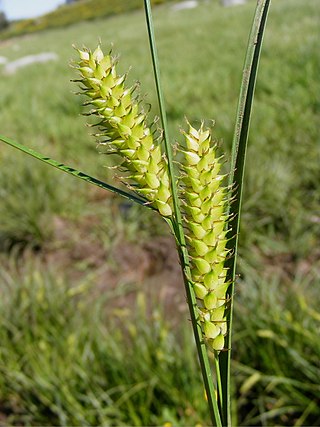
Carex vesicaria is an essentially Holarctic species of sedge known as bladder sedge, inflated sedge, and blister sedge. It has been used to insulate footwear in Norway and among the Sami people, and for basketry in North America.

Carex bushii, Bush's sedge, is a species of sedge in the genus Carex. It native to the eastern United States where it is found in areas of natural grassland.

Carex arctata, known as drooping woodland sedge, is a species of sedge native to eastern North America. It is sometimes called black sedge, compressed sedge, or drooping wood sedge. It occurs from Manitoba to the Maritimes in Canada, south to northwestern North Carolina, and west to Minnesota. Carex arctata grows in bogs, hardwood forests, and spruce forests.
Carex arctiformis, the polar sedge, is a species of sedge native to sphagnum bogs and other wetlands in northwestern North America.
Carex atrosquama, the lesser blackscale sedge, is a species of sedge that was first formally named by Kenneth Mackenzie in 1912. It is native to the northwestern United States and western Canada, from Alaska south to Utah and Colorado. It grows in alpine and subalpine meadows, as well as along rivers and streams in gravelly areas.
Carex biltmoreana, known as Biltmore sedge, is a species of sedge that was first described by Kenneth Mackenzie in 1910. It is endemic to the southeastern United States, where it occurs in southwestern North Carolina, northwestern South Carolina, and northeastern Georgia. Biltmore sedge grows on rock outcrops, often on granite, and in adjacent woodlands.

Carex brainerdii, or Brainerd's sedge, is a species of sedge that was first described by Kenneth Mackenzie in 1913. It is native to California and Oregon.
Carex bulbostylis, known as the false hair sedge, is a species of sedge native to the southcentral and southeastern United States. It was first formally named by Kenneth Mackenzie in 1915. It is also known as the eastern narrowleaf sedge, thick style sedge, and globose sedge.
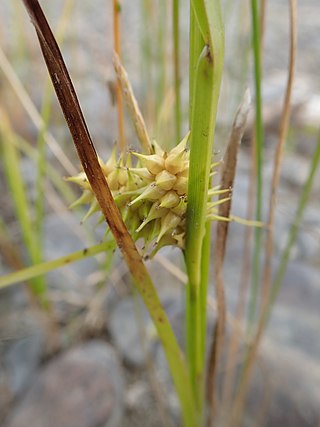
Carex cryptolepis, known as northeastern sedge, is a North American species of sedge first described by Kenneth Mackenzie in 1914.
Carex integra, the smoothbeak sedge, is a species of sedge that was first described by Kenneth Mackenzie in 1917.
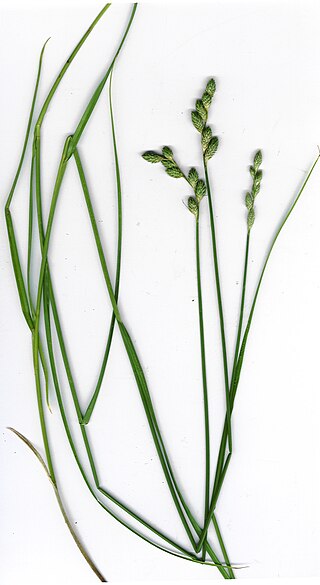
Carex longii, or Long's sedge, is a species of sedge found in North America that was first described by Kenneth Mackenzie in 1922.
Carex merritt-fernaldii, or Fernald's sedge, is a species of sedge from northeastern North America. It was first described by Kenneth Mackenzie in 1923. It is named after botanist Merritt Fernald.

Carex normalis, the greater straw sedge, is a species of sedge that was first described by Kenneth Mackenzie in 1919.
Carex projecta, the necklace sedge, is a species of sedge that was first described by Kenneth Mackenzie in 1908.
Carex subbracteata, the smallbract sedge, is a species of sedge that was first described by Kenneth Mackenzie in 1917.
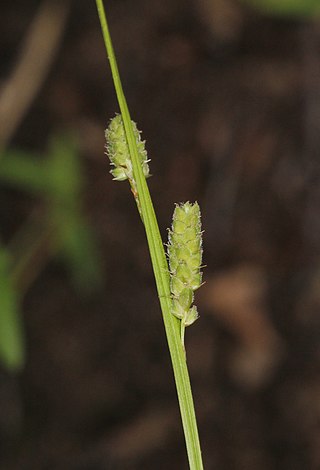
Carex swanii, known as Swan's sedge or downy green sedge, is a species of flowering plant in the family Cyperaceae. It is native to eastern North America.

Carex unilateralis, the lateral sedge, is a species of sedge that was first described by Kenneth Mackenzie in 1922. The specific epithet, unilateralis, is derived from Latin and means "one-sided".
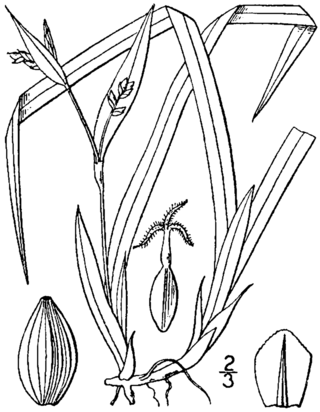
Carex abscondita, the thicket sedge, is a North American species of sedge first described by Kenneth Mackenzie in 1910. It grows along the central and eastern United States, from eastern Texas to southern Missouri, east to the Atlantic coast, and north to New Hampshire. It grows in moist areas of forests, shrublands, and swamps.












